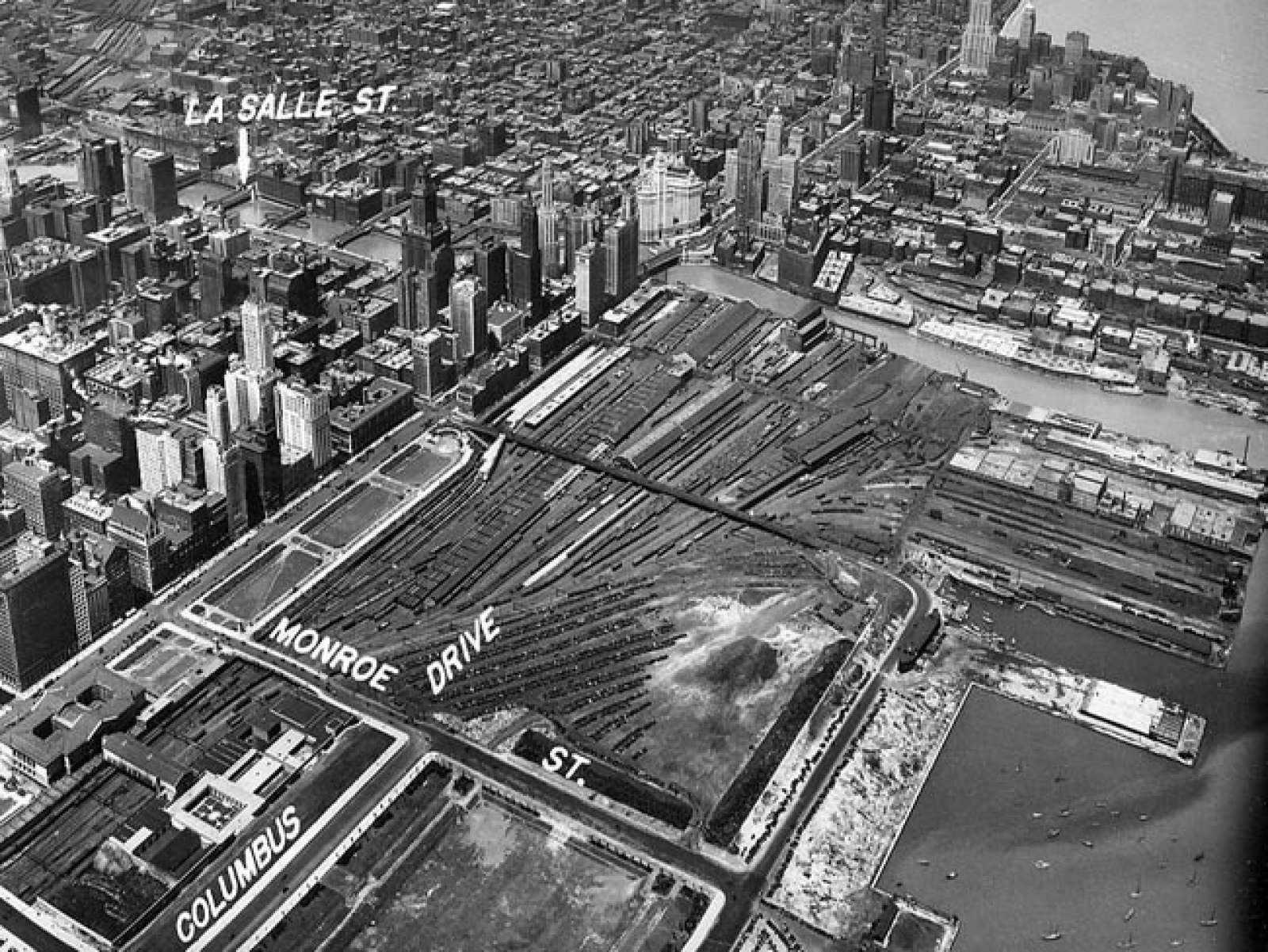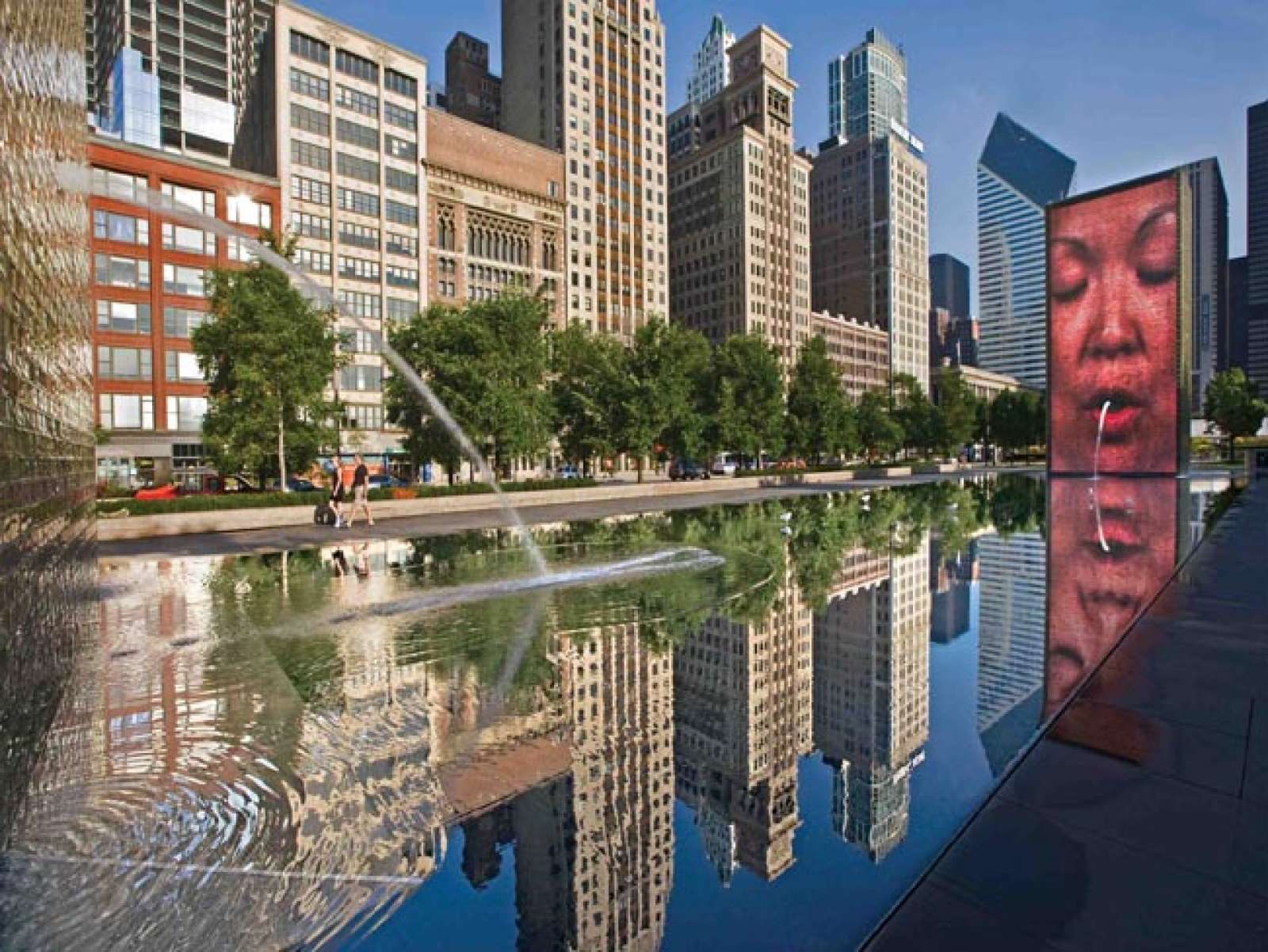Posted 11 years ago in Then and Now by Michael Ossman
I’ve written about Millennium Park in a few different contexts already, but this time – in celebration of the Park's tenth anniversary today – let’s talk Chicago history.
Longtime Chicagoans will recall that Mayor Richard M. Daley officially announced the plans for Chicago’s great park in March 1998. Six years later, following a host of cost increases, design changes, delays, and flexing of mayoral muscles, the unsightly rail yard had transformed into one of the world's most beautiful green roofs, recently ranked third among all American parks as a tourist attraction.
A Chicago-Style Challenge

(Rail Yard pre-Millennium Park, Chicago Loop | Photo: City of Chicago)
Millennium Park’s origin story is a classic Chicago tale, echoing that of the 1893 World’s Columbian Exposition: as the world watches with growing interest, the American city with so much to prove struggles with an ambitious project and, in the end, prevails triumphantly.
The idea of replacing the rail yard with a park was first floated in the late 1970's, but it was stymied by city government before it got off the ground. After all, the rail yard was still a valuable asset – Daniel Burnham considered it "untouchable" in his 1909 Plan of Chicago. By 1997, though, the idea had resurfaced, when Mayor Richard M. Daley one day found himself uninspired by the view of the rail yard from his dentist's office on Michigan Avenue, saying "Let's cover it with a park." Or so the story goes.
One of the first and greatest challenges for both projects was funding. For Mayor Daley's park, like Burnham's Fair, the solution was the private sector. Daley tapped John Bryan, a former Sara Lee CEO, to raise funds in the private sector with only his connections and the initial design in hand. Bryan proved adept to the task, garnering incredible financial support from big names such as Cindy Pritzker and Steve Crown.
Pritzker’s support became invaluable at one of the major turning points of the whole project: securing renowned architect Frank Gehry to design the Jay Pritzker Pavilion. Though he had loved Chicago all of his life, Gehry was initially skeptical of the project, feeling that the initial designs he received were too restrictive. He had, however, been the recipient of the 1989 Pritzker Architecture Prize, and on hearing that Cindy Pritzker was involved, Gehry reconsidered and ultimately designed the modernist Pavilion and the nearby BP Pedestrian Bridge.
Having Gehry on board really put wind in the sails. For one thing, his work solidified Daley’s vision of creating an indisputably modernist park. Gehry's presence also made finding additional bold, talented artists and architects that much easier. Jaume Plensa designed Crown Fountain, inspired both by Spanish gargoyles spitting water and his own dream to walk on water. Anish Kapoor came up with Cloud Gate, which, though it took a two year extension and about $17 million on top of the initial budget of $6 million to complete, stands proud as one of the iconic features of the park.

(Crown Fountain by Jaume Plensa, Millennium Park, Chicago | Photo: Choose Chicago)
For Chicago, what truly differentiates Daley’s Millennium Park today from Burnham’s 1893 World’s Fair is permanence. Millennium Park is still operating and growing, while the World’s Fair all but vanished after the event (as intended).
By the time it was finished, Millennium Park exceeded its original $150 million budget three times over. Cloud Gate, Crown Fountain, the Jay Pritzker Pavilion, Chase Promenade, Harris Theater, the McCormick Tribune Ice Rink, McDonald’s Cycle Center, Lurie Garden and Wrigley Square were all part of the grand opening ceremony in 2004. Since the ceremony, though, quite a few features and amenities have been added:
- Exelon Pavilions (opened 2005) – four solar energy-generating structures in the corners of the park, includes the welcome center
- Boeing Galleries (2005) – outdoor exhibition spaces
- Cloud Gate (2006) – construction took longer than expected
- Nichols Bridgeway (2009) – bridge connecting Millennium Park to the nearby Art Institute, design based on the hull of a boat
- Temporary art installations, including recently Jaume Plensa’s 1004 Portraits
- Performances and events at Jay Pritzker Pavilion, Chase Promenade, Lurie Garden, and the Great Lawn, including performances for the Grant Park Music Festival, Millennium Park Workouts, Summer Film Series, Target Family Fun Festival, Harris Theater performances and productions, and varying concerts and activities
Today's Millennium Park is the epitome of a mixed-use destination, enriching the eastern area of the Loop as a destination to be enjoyed by Chicagoans and tourists alike. Stop by the Park any day and you'll see a highly diverse group of people: tourists taking pictures at "The Bean," businessmen having a lunch break, children playing and laughing in Crown Fountain, residents taking a walk, students reading or drawing in the park, and countless others.
As this writer sees it, if the past is any indication of things to come, the future of Millennium Park is sure to be a bright one. Happy tenth, Millennium Park, and here's to many more!
